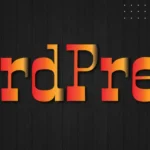Building relationships with your readers and a wider audience through social networking is the best way to ensure your blog’s long-term growth and success.
Thanks to social networking’s free tools, various methods are available to help you communicate with people worldwide.
This post teaches you what social networking, bookmarking, and microblogging are all about and how to use tools like Facebook, LinkedIn, and X to increase your blog’s readership—and achieve your overall blogging goals!
Also Read: The Essential Rules of Blogging You Should Know 2024
Table of Contents
Social Networking
The term networking typically refers to in-person communications and relationship-building efforts. Still, thanks to the tools of the social web, networking can happen online and from the privacy of your own home.
Facebook and LinkedIn are two of the most popular social networking websites. On these websites, you can create a free profile, connect with others, join conversations and niche groups, and even share your blog content through automated feeds.
In addition to Facebook and LinkedIn, other popular social networking sites are MySpace, Foursquare (a location-based mobile social network), and Ning (a fee-based site where you can create your social network).
When you create a personal profile on Facebook and LinkedIn, you can search for people you know and send them friend or connection requests.
You can publish short updates on your profile, which your connections can comment on. You can also comment on updates to your connections.
You can also upload photos, videos, and more. These straightforward social networking tools give you an incredible global reach to a vast potential audience.
For example, more than 500 million people around the world use Facebook. Social networking sites also enable you to create and join smaller, targeted groups where you can connect with people and start or join conversations related to specific topics.
You can even create a group for your blog! Alternatively, you can make a fan page on Facebook for your blog where anyone can click the Like button to add the page to their list of Likes.
Promoting Your Blog with Social Networking

So many opportunities are available via social networking to meet people and spread the word about your blog! However, simply creating a profile on popular social networking tools like Facebook and LinkedIn isn’t enough, especially if you want to use social networking to increase awareness of your blog and traffic to it.
Following are several tips you can use to take full advantage of the promotion potential social networking offers:
Create a relevant profile
If your primary purpose in joining Facebook or another social network is to promote your blog, you need to be sure the profile you create on that site is relevant to your blog’s topic.
Lead with your strengths, and demonstrate through your profile why you’re qualified to write about and discuss your blog’s topic.
Find people to connect with
Take some time to conduct searches of users on the social network you join. Some social networks allow you to search by keywords to find people discussing topics related to your blog or area of expertise.
As you find people likely to be interested in your blog and your content, send them connection requests so you can begin conversing with them through your social network profiles, private messages, and more.
Be active and publish relevant and valuable content.
One of the most critical aspects of social networking success is being an active participant. That means you should start and join conversations by providing more content that adds value to the online discussion.
Creating a profile and never updating it will not help you build awareness of your blog and drive traffic to it.
Just be sure that far more of the content you publish is not self-promotional compared to how much it is. Follow the classic 80-20 rule of marketing.
When applied to social media marketing (including social network participation), no more than 20 percent of your overall activities and content should be self-promotional. Feel free to publish links to your blog content.
Create and join groups.
Search for existing groups related to your blog’s topic, join active, relevant groups, and participate in the conversations in those groups.
If you can’t find an existing group related to your blog’s niche, create your own! You can even make a group named after your blog.
Leverage site-specific features
Each social networking site offers the ability to create a profile and make connections, but some offer extra features that can be very helpful in building an audience for your blog.
For example, you can create a Facebook page for your blog, answer questions on LinkedIn, or give and request recommendations.
Some sites even allow you to link your other social media profiles to your social networking profile so people can connect with you across the social web.
Take advantage of automated processes
Many social networking sites allow you to automatically feed your blog content or other social media profiles’ content streams into your social networking updates.
Some even allow you to feed the updates you publish on your social networking profiles to your blog or other social media profiles.
Feeding content from one site to another is a great way to appear more active and create new opportunities for people to interact with you or share your valuable content with their audiences.
Quick Tips:
Learn about Facebook features on the online Facebook Help Center page. Also, check out LinkedIn features in the online LinkedIn Learning Center.
Social Bookmarking
Social bookmarking saves web pages you like using an online bookmarking tool like StumbleUpon, Reddit, and more.
Instead of saving pages you like in your web browser’s Bookmarks or Favorites menu, where you can only access them from the computer where you saved them, you can bookmark pages using a social bookmarking tool and access them from any computer with an Internet connection.
You can make your bookmarked pages private or public (for all users to view). Still, bookmarking becomes social when users share other people’s content with broader audiences and even comment on bookmarked content.
This is where conversations happen. Pages bookmarked on popular social bookmarking sites have the potential to be seen by huge audiences, which could bring large bursts of traffic to your blog.
Increasing Blog Traffic with Social Bookmarking
The first step to drawing traffic from social bookmarking sites using an online bookmarking tool like StumbleUpon to your blog is to publish unique content people want to read and share.
If your content isn’t good, no one will want to bookmark it or share it with their audiences. Here are several more tips to help you get more traffic to your blog from social bookmarking:
- Share more content from others than your own: Don’t use social bookmarking strictly as a self-promotional tool. A big part of leveraging social bookmarking to grow your blog is building relationships with other users who, in time, will help you spread your content even further.
Therefore, you must spend more time bookmarking and sharing content from sites other than your own.
If the content you share is interesting, often related to your blog’s topic, and not just self-promotional, other users will get to know you and expect valuable bookmarks from you.
That’s the first step to growing your blog through social bookmarking: consistently sharing great content that adds value to the online conversation.
- Share content from various sources: Just as you don’t want to share information only from your blog, you shouldn’t share content from any other website. Instead, vary your bookmarks, sources, and shared content so it doesn’t appear you’re trying to boost traffic to a single site (even if that’s not your intention).
- Write great titles and descriptions: If you want people to perceive your bookmarks as click-worthy, you must write engaging, valuable titles and descriptions when you submit them. Using the same title as the original content you’re sharing is unnecessary. Instead, create titles and descriptions that pique people’s interests and encourage them to click through and read the content you’ve shared.
- Use relevant tags: It’s easy to skip adding keyword tags to your link submissions to save a few seconds, but tags are instrumental in helping get your content found and shared by other users. Tags categorize content and make it available to users searching for content related to specific topics. Take a few seconds to add keyword tags that accurately match your content and will likely be used by people searching for content like the links you share.
- Make friends and comment on other users’ submissions: Don’t just submit new links to social bookmarking sites. Take the time to resubmit (also called voting up) other users’ submissions, too. Send connection requests to other users who consistently share content you enjoy, and leave comments on other users’ submissions to start conversations. By taking time to build a band of supporters on social bookmarking sites, you’ll have an engaged audience who looks for your bookmarks and actively shares those bookmarks with others.
- Don’t try to get around the bookmarking system: Social bookmarking sites have a few written and unwritten guidelines to follow if you want your accounts to stay in good standing. Take the time to read the rules on individual social bookmarking sites, and avoid activities that might be flagged as spam. For example, don’t create multiple user accounts so you can resubmit your content more than once on the same social bookmarking site.
- Ask people to share your content: Be sure you ask people to share your best content and make it easy for them to do so. Include links visitors can click on to share one of your posts with their preferred social bookmarking sites in seconds.
Final Thoughts on Social Bookmarking Sites
Many social bookmarking sites allow users to share content from across the World Wide Web. Some niche social bookmarking sites enable users to share content related to specific topics or areas of interest.
Take the time to test multiple social bookmarking sites to determine which ones seem to drive the most traffic to your blog from your submissions, which generate the most conversations, and so on.
The key is to remember that while social bookmarking can drive a large and sudden burst of traffic to your blog, a significant increase in traffic is far more likely to occur infrequently.
Social bookmarking should be viewed as a long-term blog marketing strategy.
X (Twitter) and Microblogging
Microblogging is publishing short updates (usually 140 characters or less) on a personal profile using a microblogging tool.
Accounts can typically be public or private; you can publish updates to your profile or send private messages to other users.
The microblogging craze has become a global activity, with X (Twitter) leading the way as the most popular microblogging tool.
Quick Tips:
Popular microblogging tools include X (Twitter), Plurk, and Tumblr, both blogging applications and microblogging tools.
All About X (Twitter)
X (Twitter) is a free microblogging tool anyone can join. Creating an X (Twitter) profile and publishing updates (called tweets) of 140 characters or less takes just a few seconds.
When you create an X (Twitter) account, you can make your account public (so anyone with Internet access can view your updates) or private (so only people you approve can see your tweets).

Microblogging through X (Twitter) is more open than publishing updates on social networking sites like Facebook or LinkedIn because other users don’t have to accept you before you can follow their update stream on X (Twitter).
As long as a person’s X (Twitter) profile is public, you can click the Follow button on that person’s profile, and their tweets will start to appear in the stream of updates from people you follow on your X (Twitter) profile home page (when you’re logged in to your X (Twitter) account).
Promoting Your Blog with X (Twitter)
X (Twitter) is a fantastic tool for connecting with others, starting conversations, joining conversations, sharing content, and building relationships.
The more great content you share in your X (Twitter) update stream, the greater the chances your followers will share it with their audiences.
That means more people will find your content, and some might even start to follow your X (Twitter) stream.
Your online persona will grow, and your blog’s traffic will increase indirectly and directly from your X (Twitter) activities.
You can use the following tricks to promote your blog directly on X (Twitter). Remember, only 20 percent or less of your X (Twitter) activities should be self-promotional, and the other 80 percent should not.
- Make your X (Twitter) profile public.
- Share links to your best content.
- Share great content other X (Twitter) users have published.
- Follow people who tweet about your blog’s topic.
- Communicate with other X (Twitter) users actively engaging with your blog’s topic through direct messages, @replies, retweets, and hashtags.
- Respond to direct messages and acknowledge people who follow you, publish@replies and mentions directed at you, and retweet your updates.
- Track the traffic to the links you share with a URL shortener such as bit.ly.
- Make use of the many X (Twitter) apps available to help you track conversations (such as Monitter), organize your X (Twitter) activities (TweetDeck), and more.
- Automatically feed your blog updates to your X (Twitter) stream.
Quick Tips:
Typing @ followed by an X (Twitter) user’s username (for example, @thewpskill) at the beginning of the tweet indicates the tweet is a direct reply to that user and is referred to as an @reply (pronounced at-reply).
You can retweet updates published by other X (Twitter) users within your X (Twitter) update stream by typing RT at the beginning of the retweeted update or clicking the retweet button.
Hashtags include the # symbol followed by a keyword such as #worldcup and help users find tweets related to topics of interest.
Various methods can be used to automatically feed your blog posts to your X (Twitter) update stream. One of the easiest ways to do this is to use the free dlvr app.
Visit the dlvr home page and create a new account by clicking the signup link at the top-right corner, as shown in the Figure below.

Enter your e-mail address and a password in the signup form to create your account. When your account is created and logged in to X feed (Twitter feed), click the Create New Feed button to open the New Feed configuration page.
Name your feed, copy and paste the URL for your blog’s feed, and click the Advanced Settings link to expand the page.
Enter any additional information related to update frequency, formatting, and more. Next, click the Continue to Step 2 button at the bottom of the page.
This takes you to another page where you can select X (Twitter) and your specific X (Twitter) account as the destination for your X feed (Twitter feed) and complete the configuration process.
Finally, your new blog posts should be published shortly on your X (Twitter) update stream. Note, however, that sometimes there is a delay before a new X feed (Twitter feed) starts to work.
Various other tools and even some WordPress plug-ins can help you automatically update your X feed (Twitter feed) when you publish a new blog post. If you’re unhappy with the X (Twitter) feed, don’t be afraid to try other options.
Promoting Your Social Networking Profiles on Your Blog
To fully integrate your online marketing strategy, you should promote your blog content on your social networking and social bookmarking profiles and promote those profiles on your blog, as shown below.

In other words, surround consumers with your branded online destinations so they can easily access your content and conversations.
Several widgets are available through some of the most popular social media tools. These are easy to insert into your WordPress blog’s sidebar to promote the content you publish there and invite people to connect with you on those profiles.
You can also promote your social media profiles in your blog’s sidebar by publishing social media icons that link to your profile on various sites. See the Figure below for an example of how social media icons can look in a blog’s sidebar.
More Options
There is more to the social web than blogging, X, and Facebook. You can promote your blog by writing guest blog posts on other popular blogs, giving away prizes in contests you host on your blog, syndicating your content, and more.
You can create, upload, and share videos, audio content, images, presentations, and more. Several resources can help you build your online presence, increase your online connections, and enhance relationships with social web users.
KEEP READING:
- SEO Analytics and Reporting: The Simple Step-by-Step Guide
- Off-Page SEO and Backlinks: Everything You Need to Know
- Keywords Research and Analysis: The Definitive Guide in 2024
- Fundamentals of Search Engines (2024)
- Content Marketing and SEO: How To Use Them Together
- What is SEO? (Search Engine Optimization)
Wrapping Up
Social networking is like face-to-face networking, but you do it from your computer. Social bookmarking makes it easy to find the content you like and share content with a broad audience.
Microblogging with X (Twitter) is an easy and popular way to grow your online audience, relationships, and blog.
Using social web tools, you can promote your blog and build your audience both on and off your blog.
That all. Let’s meet in the comments column below.
Let us discuss.
If you liked this article How to Promote Your Blog Through Social Networking, please follow us on the following Social Networking:
- Find Us On Facebook
- Connect with WordPress Experts and other WordPress Users in our free Facebook Community.
- Join Us On Twitter
- Follow Us On the Telegram Group
- Find Us On the WhatsApp Channel
- You can also reach Us by using the Contact Form.
- Also, find Our Blog Page for more tutorials.
- Follow Us On Google News for more updates.


















